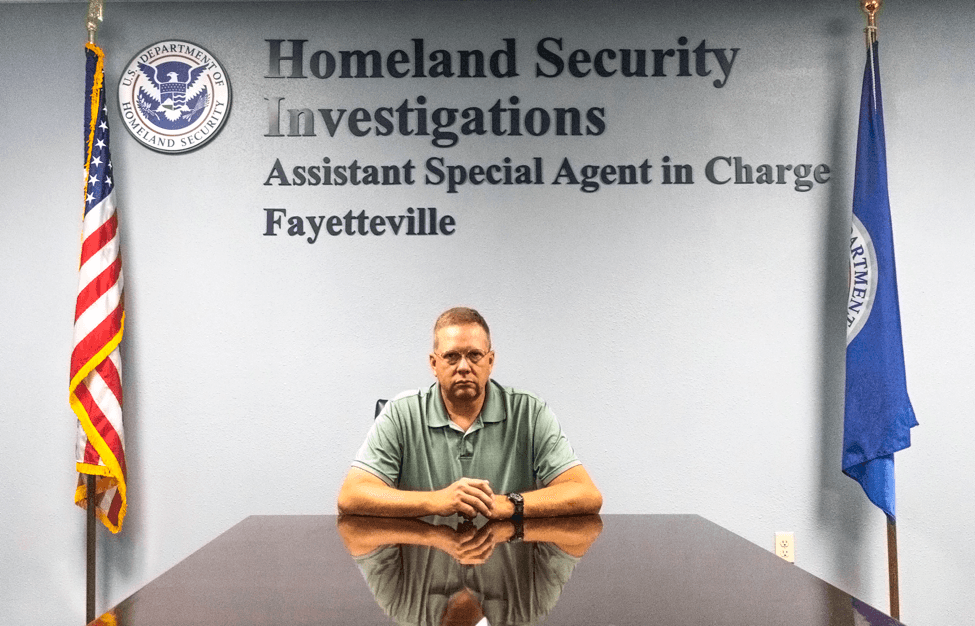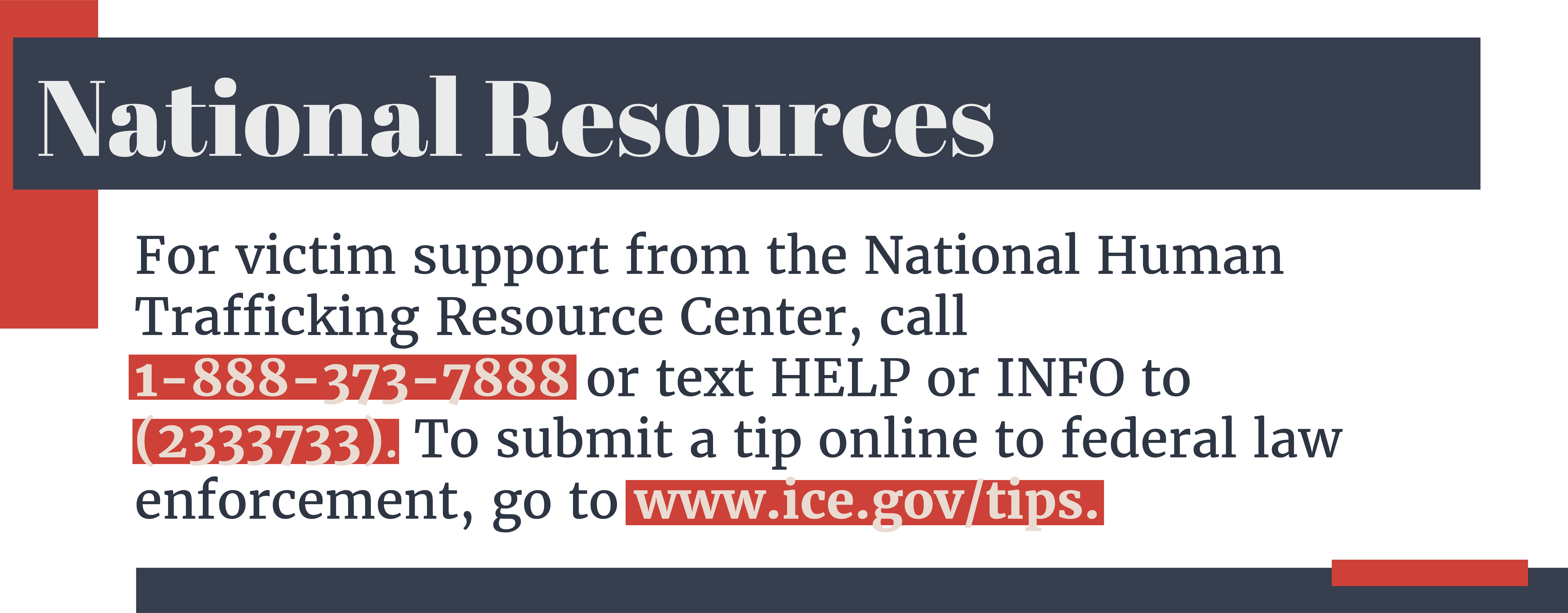Inside today’s fight against sex trafficking
By Catherine Shackelford
October 30, 2018
Ten short blocks. It took Kathy Bryan 10 short blocks to reach her friend’s house in Virginia Beach. They were the kind of steps a 15-year-old takes when she’s walking to a friend’s house to study. Innocent. Unassuming.
They definitely weren’t the kind of steps a person takes when expecting to meet a man outside of some townhomes en route to her best friend. A man who, six months later, would sell her body for sex.
“I found out firsthand what it was like to be enslaved,” Kathy said. “In our country. In America. In my day and time.”
She wasn’t enslaved immediately. All they exchanged at first were mere “hello”s. The relationship slowly progressed over time. The greetings grew longer, more frequent, and once he knew she trusted him, he shifted gears.
1981 | Virginia Beach
She had plans to go dancing with him one Friday night. Kathy was excited. They’d kicked off a friendship the past six months, talking, hanging out and a few times, holding hands. The man picked her up from her house, and on the way he said, “Oh, I forgot something at my house.” She thought nothing of it. She’d been to his house before.
His real home, crappy and crammed, wasn’t on the way to her friend’s place, by the way. He’d intentionally sat outside of some townhomes where they first met, hoping to strike up a “relationship” with someone like Kathy. His real home, where the trafficking began, was a mile or two away.
Once they parked, Kathy and the man went into the living room. He stopped her by the fireplace and kissed her. It was their first. He deepened the kiss, holding her as a man walked down the stairs. Naked. Then, for two or three hours, they raped and sodomized her. Once they finished, the men left her on the ground, walked into the kitchen and made sandwiches.
Kathy lay on the floor in shock. Scrambling to her feet, Kathy made a break to the bathroom, locking herself inside and hoping for a window. She looked around. No window. No way out.
Kathy grabbed a towel, wrapping it around herself. She planned to open the door slowly, without it squeaking, and run for the front door. But as soon as she stepped into the hallway so did he.
It was like she was underwater, barely hearing the muffled voices around her. Kathy could not hear what he was saying. That is, until he said her sister’s name, “Cassandra.” Now she was listening.
“From this point forward, you will be where I tell you to be, when I tell you to be there. Or else, Cassandra,” he said.
No. Not her 5-year-old sister.
And just like that, for approximately two years, Kathy became very familiar with the residential trafficking world.
Residential trafficking isn’t the kind you see in movies like “Taken” that involve a kidnapping. That’s rare. Only 5 percent of U.S. sex trafficking is that kind – someone chained to a bed or locked in a house. Residential trafficking is the subtle, under-your-nose type. No changes from the outside. Just a deadening from the inside. Kathy couldn’t, no, wouldn’t, escape. “Or else, Cassandra.”

Art by Ally Gibons
2018 | Arkansas
More than 40 million people worldwide are victims of human trafficking, according to the International Labor Organization. In the 2015 fiscal year, U.S. attorneys prosecuted 1,049 suspects for human trafficking offenses, indicating a 44 percent increase from 729 suspects in 2011, according to a 2018 report from the Bureau of Justice Statistics.
Eighty percent of human trafficking cases worldwide are sex-trafficking cases. The U.S. Department of Homeland Security defines sex trafficking as modern-day slavery that uses force, fraud or coercion in exchange for sexual exploitation. In 2017, there were 147 phone calls from Arkansas to the National Human Trafficking Hotline and 33 sex trafficking cases in the state, but this includes only reported incidents.
“There’s typically only one reported trafficking case in Northwest Arkansas a year because 9 out of 10 victims don’t want to testify,” said John Ahrends, a retired Fayetteville resident agent for the U.S. Department of Homeland Security.
Lack of education and awareness contribute to this problem. At a dinner party, I mentioned to some women my findings on sex trafficking in Northwest Arkansas. One woman stared at me, appalled.
“We have that here?” she asked. “No, seriously, like we have that here?”
She moved from Los Angeles to give her daughter a safe environment, free of danger. But no city is immune.
Arkansas trends on the lower side of trafficking in the U.S., but there has been an increase over the years because of population growth, according to a Fort Smith FBI agent, who requested to speak anonymously to protect his undercover identity. He argues that people in the Northwest Arkansas area still have a small-town mentality when they approach sex trafficking, meaning they think trafficking happens in big cities, sure, but not here.
“Trafficking is hidden,” said Jenny Sorey, founder of Hub of Hope, a local organization helping sex-trafficking victims. “It’s rooted in the darkness.”
The lack of established organizations and education to the public caters to this rising problem in Northwest Arkansas. Sorey says that before 2015, there wasn’t a nonprofit organization for trafficked victims in the area. That’s why she stepped up and started Hub of Hope, which began meeting as a coalition in 2015. “There’s no way we’re immune to this issue,” Sorey realized. “I began diving into this issue here in Arkansas, asking, ‘Do we have a response to this? What does it even look like here domestically?’”
1983 | Virginia Beach
Kathy made her first D ever. School was harder in Virginia than it was in New York, where she lived previously, and life was busier. In New York, Kathy was a straight A and B student. She was a year ahead in class and already looking at college applications and scholarships. But now, she woke up, went to class, fixed dinner with her mom, went to bed, snuck out and was sold to men who paid her traffickers for sex. She often skipped class her senior year just to catch up on sleep.
Kathy stopped hanging out with her best friend. It was imperative no one figured out what was going on, and she worried her friends would be forced into trafficking too.
Her trafficker embedded himself in her inner circles. He would tell Kathy what meal her mom would cook that night or how her brother got a bike for his birthday. These were little ways to remind her that she was being watched. She wasn’t in control.
Sorey explains that oftentimes trafficked victims don’t testify because of fear but also because many don’t associate “trafficked” or “victim” with themselves. They’ve been trained – brainwashed really – to believe this is their family. “They look at their pimps as, ‘daddy,’” Sorey said. Many pimps threaten violence on parents, siblings, cousins and friends.
Sorey noticed this play out while serving meals to women in a motel one week. She noticed a woman with downcast eyes and silent lips accompanied by a man. He answered every question for her.
“Would you like a salad?”
“Yes, she’ll have some.”
She had the word bitch tattooed across one side of her cheek. Women serving with Sorey started whispering to one another, subtly pointing to the image.
“Do you really believe she chose to have that on her face?” Sorey asked, stunned. Branding names with tattoos of barcodes, cash signs or a name shows that the woman is that man’s property.
“Traffickers will exploit any vulnerability they can find,” Kathy said. “They’re all about power and control and greed.”
That’s why Kathy’s trafficker chose Cassandra as a threat. He knew Kathy’s vulnerability. Choosing Cassandra out of her five siblings was strategic.
When Kathy was 6, she had a younger sister who was born with half a heart. After a failed heart transplant, her sister died. Kathy climbed into bed every night and prayed for a little sister. About five years later, Cassandra was born. They shared a room, even when Kathy was a teenager.
“He picked well,” Kathy said. “I would’ve done anything for her.”
To protect Cassandra, Kathy never mentioned being trafficked to anyone, especially not to law enforcement.
Like most trafficked victims, she was trapped. She remained obedient for about two years, until something odd happened. One night her trafficker randomly dropped her off at a shopping center and said he never wanted to see her again. He warned her against going to any of the places she’d been or talking to anyone she’d met. It was the only way he could protect her, he said.
With that, he was gone. Kathy is not certain why or what he was trying to protect her from.
She doesn’t remember how she got home that night, but she did. She was free, sort of.
“Rescue does not equal freedom,” Kathy said. “Healing brings freedom.”
Kathy didn’t tell a soul what happened, not even her husband, who she married about a year and a half after the incident. She held in the secret for 27 years.
2018 | Northwest Arkansas
Most conversations with advocates like Sorey leave gaps, so it can take time to figure out a victim’s story or what they need. Gretchen Schmeltzer, a licensed psychologist, member of the American Psychological Association and leader of Into the Light, a prevention and rescue non-profit in Mountain Home, argues they need a support system; they need more than just escaping.
“They need you to try not to fix them,” she said. “They need to be seen. They need you to believe them.”
Ahrends knows trafficked victims tend to keep their secrets hidden. He’s worked with Homeland Security Investigations for more than 22 years. Because most victims don’t want to take the risk of talking to the police, Ahrends team relies on relationships with nonprofits in Northwest Arkansas, establishing trust and letting those groups serve as the initiators.
Northwest Arkansas’ Homeland Security waits until women like Sorey and Schmeltzer, founder of Into the Light, develop relationships with the victim. Then Ahrends enters the scene and questions the victim, creating leads without putting the victim in danger. He’ll conduct his own investigation and create sting operations, which are undercover operations designed to nab a person committing a crime, or in this case, traffickers.
“We’ve all gotta work hand-in-hand,” Ahrends said. “It’s the most successful way.”

John Ahrends, a retired resident agent for the U.S. Department of Homeland Security, sits at the head of the Homeland Security Investigations conference table in Fayetteville on Sept. 26. Ahrends works with local nonprofit organizations to address sex trafficking in the area. Photo by Jake Halbert
“If you don’t give me anything, I can’t do anything,” Ahrends told them.
In Northwest Arkansas, the nonprofits construct weekly meetings, inviting law enforcement and anyone interested to come.
Schmeltzer realized the importance of the community unifying their efforts with this issue, a large reason why she and 15 others started Into the Light in Mountain Home, which became an official nonprofit in 2015 and was one of the first sex-trafficking nonprofits in that area. After Schmeltzer’s team started Into the Light, many residents jumped on board.
“We’ve been really supported by the community, by the church and by areas that surround Mountain Home,” Schmeltzer said.
But with the rise of the Internet, there’s been an increase in trafficking, largely due to pornography. The industry helps traffickers attract more clients with photos and films of the ‘product’ because most exchanges are now online.
The Internet has also created more complexities in dealing with trafficking. Thousands of websites devoted to prostitution don’t allow anonymity, said Sgt. Jason French with the Fayetteville Police Department. It’s a lot harder for the police to create sting operations that will catch traffickers in the act.
“In order to go through these escort services, the website requires you to be verified,” French said. “They want to know who you are before they’re even willing to meet with you.”
As these complexities arise, there is a greater push for more education reforms in Arkansas so that parents and teenagers can begin to make boundaries online and prevent sex trafficking from happening. On March 8, Homeland Security Investigations and the Arkansas Department of Education partnered together and created new legislation requiring all Arkansas educators to have 30 minutes of sex-trafficking education every year, including a four-part video series that introduces the issue, shows what signs to look for in a victim and outlines options available to victims. Officials expect about 40,000 teachers and faculty to view the videos.
However, the Arkansas Department of Education and Homeland Security representatives I spoke with could not explain which department will enforce the training nor define what would happen if an educator failed to take the 30-minute course.
April 30, 2018 | Springdale
The Springdale Rotary Club’s Day of Awareness ended its lunch with a standing ovation as hundreds cheered for Kathy sharing her story.
Back in 2011, Kathy felt led to write a book and tell people about her experience as a sex-trafficking survivor. At first, she was hesitant. She wrestled with the idea of writing a book. But one day, while praying, she told God she would do what He wanted, that she was all in. Fifteen minutes later, her phone rang. A friend asked if she was okay, said that God told her to call and see if she wanted to share anything with her. Kathy told her friend her story during that phone call. Quickly after, her friend invited her to speak at a women’s retreat. After the retreat, she spoke again and again.

Kathy Bryan escaped her own trafficker about 35 years ago and later became an advocate for sex-trafficking victims. Photo courtesy of Bryan
“It’s been amazing getting to work with other victims – to see them own their life and to let what was stolen have an end,” she told the audience.
Ten short blocks. Or 15. Or 20. They aren’t slow steps, though sometimes it feels that way. They aren’t trepid steps. They are the kind of steps a trafficked victim takes with Kathy, venturing into the unknown.
“The unknown is scarier than the known, even when the known is terrifying,” Kathy said.
But maybe it’s a little less terrifying if you join hands.
